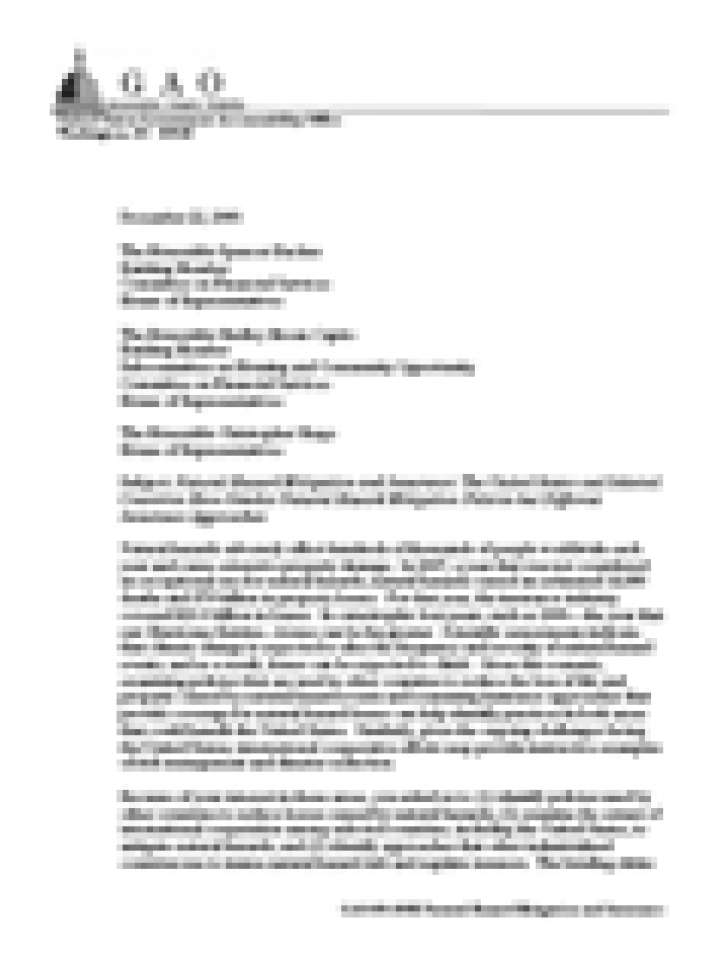Natural hazard mitigation and insurance: the United States and selected countries have similar natural hazard mitigation policies but different insurance approaches
Natural hazards adversely affect hundreds of thousands of people worldwide each year and cause extensive property damage. In 2007, a year that was not considered an exceptional one for natural hazards, natural hazards caused an estimated 14,600 deaths and $70 billion in property losses. For that year, the insurance industry covered $23.3 billion in losses. In catastrophic loss years, such as 2005--the year that saw Hurricane Katrina--losses can be far greater. Scientific assessments indicate that climate change is expected to alter the frequency and severity of natural hazard events, and as a result, losses can be expected to climb. Given this scenario, examining policies that are used in other countries to reduce the loss of life and property caused by natural hazard events and examining insurance approaches that provide coverage for natural hazard losses can help identify practices in both areas that could benefit the United States. Similarly, given the ongoing challenges facing the United States, international cooperative efforts may provide instructive examples of risk management and disaster reduction. Because of Congressional interest in these areas, GAO was asked to (1) identify policies used by other countries to reduce losses caused by natural hazards; (2) examine the extent of international cooperation among selected countries, including the United States, to mitigate natural hazards; and (3) identify approaches that other industrialized countries use to insure natural hazard risk and regulate insurers.
